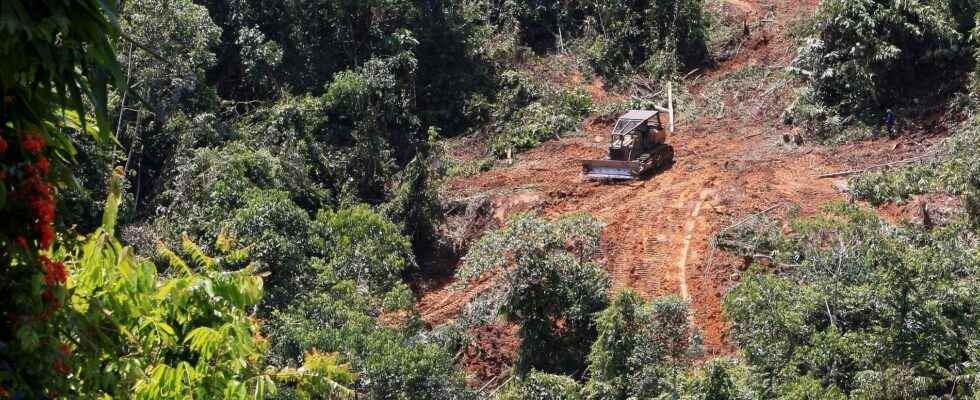Published: Just now
full screen
Next
Drone image from one of the studied areas in Malaysian Borneo.
1 of 2Photo: Ross Gray/PNAS
Cutting down rainforest can have a greater negative environmental impact than previously thought. Scientists have seen that tropical forests release more carbon into the atmosphere than they sequester even when they start to grow again.
Deforestation of tropical rainforest affects the environment negatively in many ways. One is that it affects biological diversity negatively, another is that it releases the greenhouse gas carbon dioxide into the atmosphere. But when the forest grows back, one theory has been that it takes up a lot of carbon from the air, and acts as a so-called carbon sink.
But now researchers, from among others the Imperial College in London, have looked at the amount of carbon in forests in Borneo that have been cut down. According to their analysis, the area continues to emit carbon at least a decade after the trees have been felled.
“We cannot start from the assumption that areas where the forest has been cut down act as carbon sinks,” says Maria Mills, a researcher at the University of Leicester and one of the study’s authors in a statement.
Examined the total carbon flow
Carbon flows to and from trees and soil have an impact on the amount of greenhouse gases in the atmosphere. Rainforests are important for sequestering carbon from the atmosphere.
According to the researchers, whose results are published in the journal Proceedings of the National Academy of Sciences, previous studies have focused on the growth of new trees to estimate how much carbon is taken up from the atmosphere. But in the new study, they also investigated how much carbon came from the soil and from trees and stumps left behind after deforestation.
They did this, among other things, with the help of portable equipment to measure the carbon content in soil samples and in the remains of dead trees. The researchers also set up a 52-meter-tall tower that measured carbon flow at the forest site to see if it was releasing more than it was taking in. The measurements were made regularly between 2011 and 2017.
Emits more than it binds
Their conclusion is that heavily or partially logged forest areas even emit more carbon than they sequester. They estimate in their calculations that the forest emits 1.75 tons of carbon per hectare in partially logged areas and 5.73 tons of carbon per hectare in heavily logged areas.
According to the researchers, the largest share of the carbon comes from indirect damage from logging such as organic material in the soil or from rotting trees left behind. The researchers write that forests that are felled and then allowed to grow up are important for biological diversity, but that new methods that take carbon flows into account may be needed.
Facts
Carbon sinks
When the forest grows, carbon is taken up from the atmosphere via photosynthesis. Net storage means that the absorption of carbon is greater than the loss that occurs each year in connection with deforestation and natural decomposition.
Carbon sinks mean that there is a net storage of carbon in the forest. Carbon sinks can increase through measures that increase growth or reduce the loss of carbon through reduced harvesting or natural decomposition.
Source: Swedish Environmental Protection Agency
Read more
